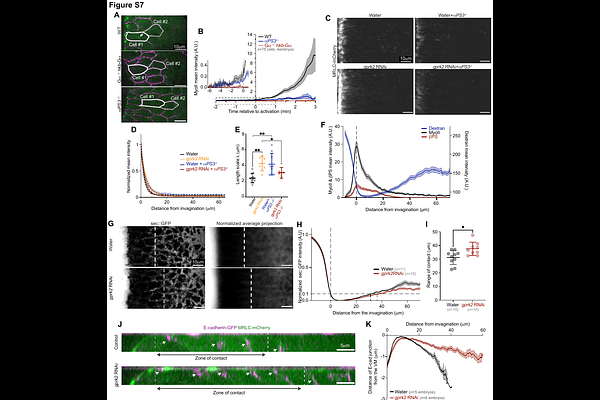Spatial patterning of contractility by a mechanogen gradient underlies Drosophila gastrulation

Spatial patterning of contractility by a mechanogen gradient underlies Drosophila gastrulation
Mundhe, G.; Dunsing-Eichenauer, V.; Philippe, J.-M.; Da Silva, E.; Collinet, C.; Lecuit, T.
AbstractDuring development cell deformations are spatially organized, however, how cellular mechanics is spatially controlled is unclear. Spatial control of cell identity often determines local cellular mechanics in a two-tiered mechanism. Theoretical studies also proposed that molecular gradients, so called 'mechanogens', spatially control mechanics. We report evidence of such a 'mechanogen' required for Drosophila gastrulation. We show that the GPCR ligand Fog, expressed in the posterior endoderm, diffuses and acts in a concentration-dependent manner to activate actomyosin contractility at a distance during a wave of tissue invagination. While Fog is uniformly distributed in the extracellular space, it forms a surface-bound gradient that activates Myosin-II via receptor oligomerization. This activity gradient self-renews as the wave propagates and is shaped by both receptor endocytosis and a feedback mechanism involving adhesion to the vitelline membrane by integrins. This exemplifies how chemical, mechanical and geometrical cues underly the emergence of a self-organized mechanogen activity gradient.